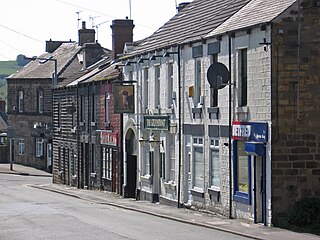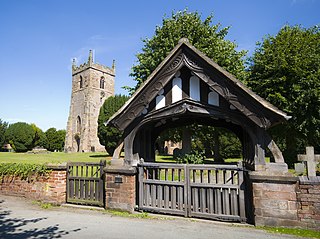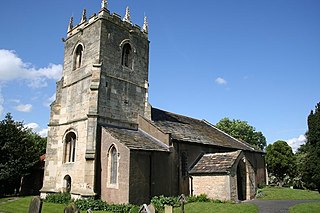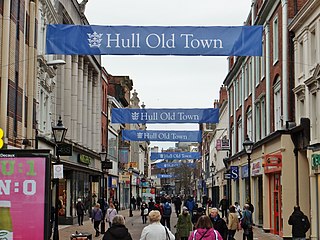
The Yorkshire Grey was a common name for public houses in England, some still survive but most have now closed or changed their name. They were named for the Yorkshire Grey Horse, a breed commonly used to pull brewery drays.

The Yorkshire Grey was a common name for public houses in England, some still survive but most have now closed or changed their name. They were named for the Yorkshire Grey Horse, a breed commonly used to pull brewery drays.
140 London Road, Biggleswade [1]
At the corner of Grays Inn Road and Theobald's Road in Bloomsbury, Camden, London, situated to the north of Gray's Inn. It is a Grade II listed building, built in 1877 by J. W. Brooker. [2] The pub was established in 1676 and was historically in the county of Middlesex. [3] The Amalgamated Society of Gentleman's Servants once met at The Yorkshire Grey inn in the late 18th century, although Hart Street is mentioned as the location and it is possibly a different pub. [3] In 1848 it was owned by an Oliver Waterloo King. [4] It serves Scotch and Japanese whiskies and traditional English pub grub. [5]
Located at 16-17 Hall Gate, Doncaster.
Located on A38.
See main article Yorkshire Grey, Fitzrovia
Now a Giggling Squid restaurant at 33 High Street.
In the 19th century at 64 King Street
Now a dental surgery. [6]
Renamed The Elgar Inn.
Constructed in the 1920s on the Eltham Road (now South Circular) between Eltham and Lee. Closed in 1994 it became a McDonald's restaurant. [7]
Corner of Guildhall Walk and Alex Rose Ln. Grade II listed. Now the 'Guildhall Village'
A Grade II listed building at 17 High Street. [8] Now an ASK Italian restaurant. [9] [10]
Built in 1833 at 69 Charles Street, Sheffield, closed in 2006 and later demolished.
Now Lokman Sofrasi a Turkish restaurant.

Conisbrough is a town within the Metropolitan Borough of Doncaster, in South Yorkshire, England. It is roughly midway between Doncaster and Rotherham, and is built alongside the River Don at 53°29′N1°14′W. It has a ward population of 14,333.
The A1 is the longest numbered road in the UK, at 397 miles (639 km). It connects London, the capital of England, with Edinburgh, the capital of Scotland. It passes through or near North London, Hatfield, Welwyn Garden City, Stevenage, Baldock, Letchworth Garden City, Biggleswade, St Neots, Huntingdon, Peterborough, Stamford, Grantham, Newark-on-Trent, Retford, Doncaster, York, Pontefract, Wetherby, Ripon, Darlington, Durham, Sunderland, Gateshead, Newcastle upon Tyne, Morpeth, Alnwick and Berwick-upon-Tweed.

Stevenage is a large town and borough in Hertfordshire, England, about 27 miles (43 km) north of London. Stevenage is east of junctions 7 and 8 of the A1(M), between Letchworth Garden City to the north and Welwyn Garden City to the south. In 1946, Stevenage was designated the United Kingdom's first New Town under the New Towns Act.

Biggleswade is a market town and civil parish in Central Bedfordshire in Bedfordshire, England. It lies on the River Ivel, 11 miles (18 km) south-east of Bedford. Its population was 16,551 in the 2011 United Kingdom census, and its estimated population in mid-2019 had increased to 21,700, its growth encouraged by good road and rail links to London. The King's Reach development, begun in 2010, will provide 2,000 new homes to the east of the town.

The White Hart was the personal badge of Richard II, who probably derived it from the arms of his mother, Joan "The Fair Maid of Kent", heiress of Edmund of Woodstock. It may also have been a pun on his name, as in "Rich-hart". In the Wilton Diptych, which is the earliest authentic contemporary portrait of an English king, Richard II wears a gold and enamelled white hart jewel, and even the angels surrounding the Virgin Mary all wear white hart badges. In English Folklore, the white hart is associated with Herne the Hunter.

The Angel, Islington, is a historic landmark and a series of buildings that have stood on the corner of Islington High Street and Pentonville Road in Islington, London, England. The land originally belonged to the Clerkenwell Priory and has had various properties built on it since the 16th century. An inn on the site was called the "Angel Inn" by 1614, and the crossing became generally known as "the Angel". The site was bisected by the New Road, which opened in 1756, and properties on the site have been rebuilt several times up to the 20th century. The corner site gave its name to Angel tube station, opened in 1901, and the surrounding Angel area of London.

Darfield is a village within the Metropolitan Borough of Barnsley, South Yorkshire, England. It is historically part of the West Riding of Yorkshire. The village is situated approximately 4 miles (6 km) east from Barnsley town centre. Darfield had a population of 8,066 at the 2001 UK Census, increasing to 10,685 at the 2011 Census.

Worsbrough is an area about two miles south of Barnsley in the metropolitan borough of Barnsley, South Yorkshire, England. Before 1974, Worsbrough had its own urban district council in the West Riding of the historic county of Yorkshire and it is still counted as a separate place from Barnsley by the 2011 Census, but it is often treated as part of Barnsley as the two settlements run into one another.

Alrewas is a village and civil parish in the Lichfield District of Staffordshire, England.

Cantley is a village and civil parish in the Metropolitan Borough of Doncaster in South Yorkshire, England. The village is adjacent to Bessacarr, separated by Bawtry Road. It has a population of 2,830, reducing slightly to 2,817 at the 2011 Census.

Barkston Ash is a small village and civil parish close to Selby in North Yorkshire, England. It was formerly known as Barkston in the West Riding of Yorkshire.

King Street is a street in central Cambridge, England. It connects between Sussex Street heading west and Hobson Street heading south at the western end and a large roundabout to the east. It runs parallel to and south of Jesus Lane. The roads link together at a roundabout at the eastern end. To the east is Maid's Causeway and then Newmarket Road leading out of Cambridge. To the north is Victoria Avenue between Jesus Green and Midsummer Common. To the south is Short Street, Cambridge, quickly leading into Emmanuel Road past Christ's Pieces.

The Great North Road was the main highway between England and Scotland from medieval times until the 20th century. It became a coaching route used by mail coaches travelling between London, York and Edinburgh. The modern A1 mainly parallels the route of the Great North Road. Coaching inns, many of which survive, were staging posts providing accommodation, stabling for horses and replacement mounts. Nowadays virtually no surviving coaching inns can be seen while driving on the A1, because the modern route bypasses the towns in which the inns are found.

Biggleswade railway station serves the town of Biggleswade in Bedfordshire, England. It is on the East Coast Main Line, 41 miles 13 chains from London King's Cross. The station is managed by Great Northern, although most services are operated by Thameslink.

The New Inn, 16 Northgate Street, Gloucester, England, is a timber framed building used as a public house, hotel and restaurant. It is the most complete surviving example of a medieval courtyard inn with galleries in Britain, and is a Grade I listed building. The announcement of Lady Jane Grey's succession to the English throne was made from the Inn gallery in 1553.

Whitefriargate is a pedestrianised street in the Old Town area of Kingston upon Hull, in the East Riding of Yorkshire, England. During the 20th century, it was one of the main shopping streets in the city centre, but some of the major stores have closed down, which has been attributed to out of town shopping centres. However, the Street still provides a useful link to and from the old town of Hull.